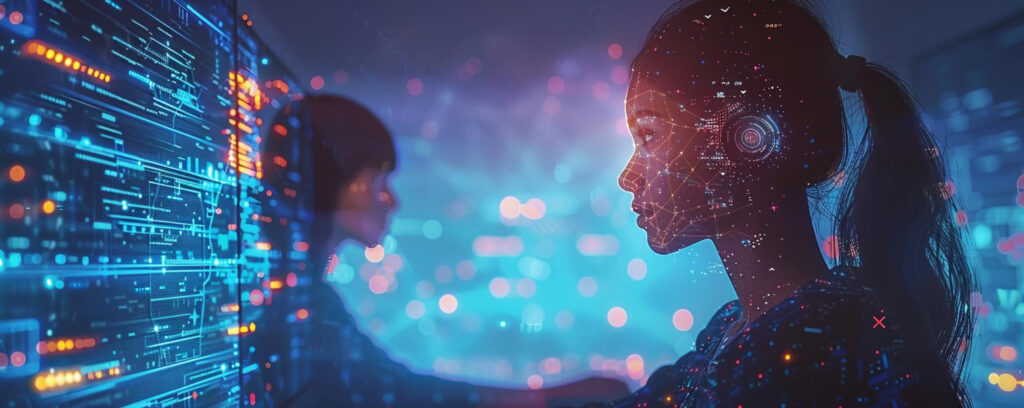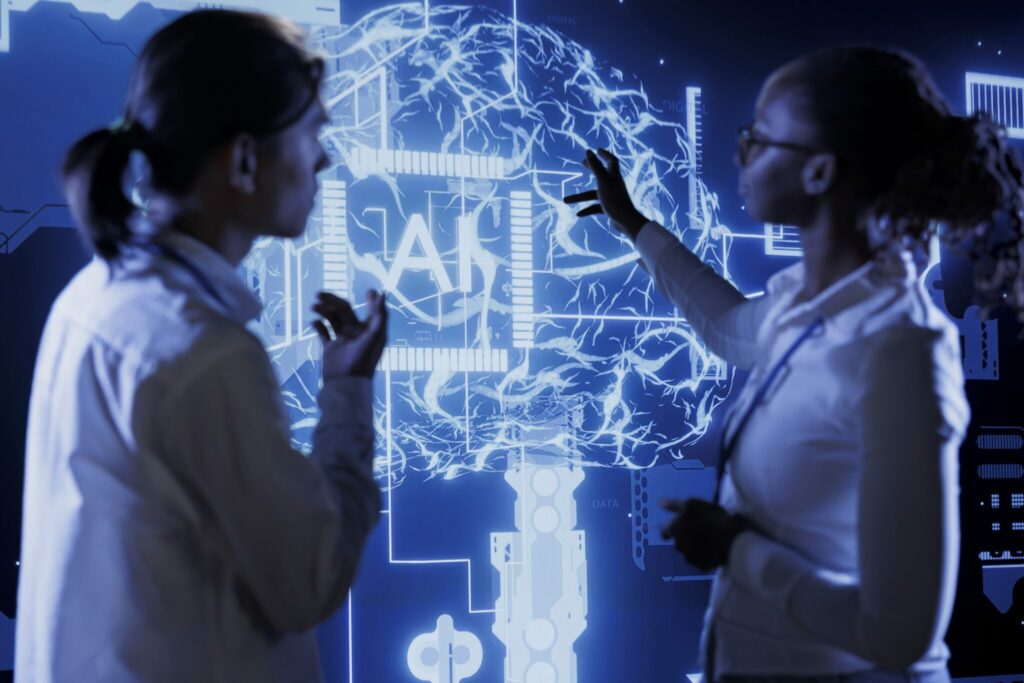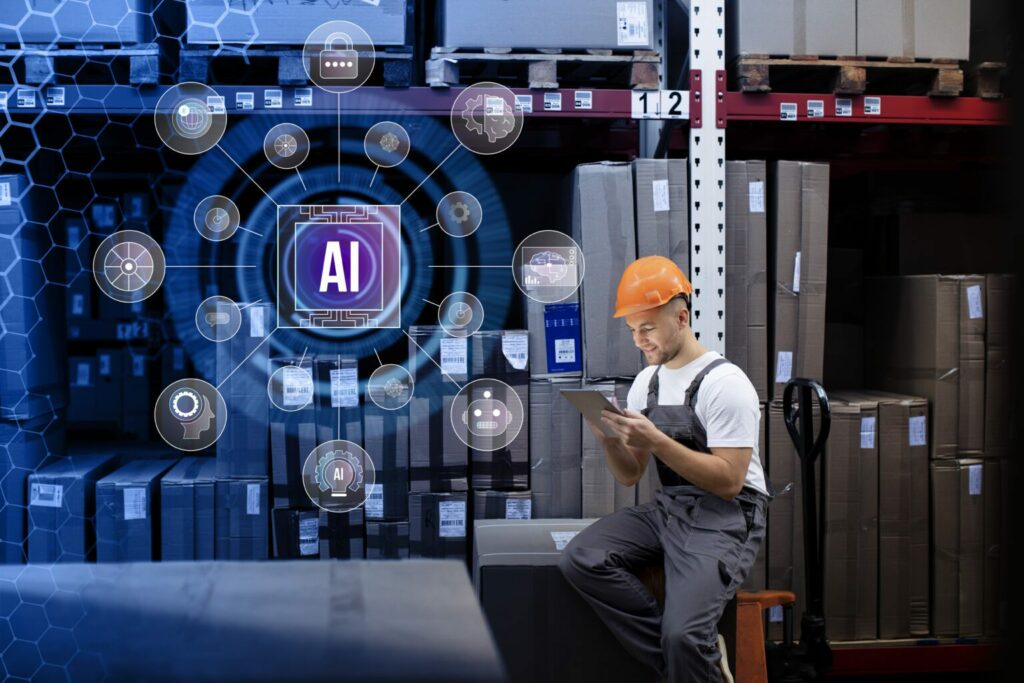
Jatin Vaghasia
9 months ago
Unlocking Business Transformation: How AI in decision making Empowers Human Expertise
The integration of artificial intelligence in business decision-making is rapidly gaining traction, with 80% of businesses leveraging its capabilities. However, the long-term value lies in human-AI collaboration and not in replacing human experts. Businesses should prioritize a balanced partnership for efficiency and growth, focusing on streamlining business operations and data-efficient decision-making rather than complete automation.

How to Use AI in Decision Making?
Understanding the need for responsible use of AI in decision-making, here is the insight generation process using AI. It involves analyzing data to uncover valuable insights for strategic decision-making, typically including critical stages such as:
- Defining business objectives: Identify what data analysis aims to achieve based on organizational goals.
- Data collection: Gather relevant data from various sources like surveys, website behavior, and sales.
- Data preparation: Clean, integrate, and transform raw data into a usable format.
- Data visualization: Explore data through visualizations like charts and graphs to identify patterns and trends.
- Modeling and algorithmic analysis: Apply statistical models and algorithms to uncover complex patterns and forecast metrics.
- Analyzing and interpreting results: Evaluate the meaningfulness and impact of insights for decision-making.
- Framing and communicating recommendations: Compellingly communicate key takeaways and recommendations.
- Implementation and measurement: Implement recommendations, track their impact, and measure results over time.
Why Is Human Judgment Crucial?
It’s critical to acknowledge the role that human oversight plays in the decision-making process, even though AI has become proficient at analyzing enormous volumes of data and spotting patterns. An evaluation of the level of human involvement is necessary in the context of processing that may involve automated decision-making. This evaluation entails evaluating the system in use, the processing, and its surroundings. To do this, it is advised to evaluate an individual’s involvement in the decision-making process by looking at a variety of factors, including their authority, competence, capacity, diligence, or independence.
Importance of Human Judgement
- Humans define objectives and questions for analysis.
- Humans select and prepare data for AI models.
- Humans interpret model results and identify areas for improvement.
- Humans provide feedback to refine and optimize models.

The Power of AI In Decision-Making
1. Finding hidden patterns and trends in massive data sets and strategically incorporating prediction features.
2. The automation of laborious and complicated processes, speeds up the processing of massive data sets and cuts down on the time needed to find pertinent information.
3. The implementation of cutting-edge machine learning algorithms and natural language processing techniques has allowed for the detection of complicated patterns and the creation of insightful information.
4. Increase suggestion customization and enhance customer satisfaction. Because a great deal of data about preferences, behaviors, and personal needs have been analyzed.
The Irreplaceable Human Factor
According to neuroscience, decision-making is influenced by two distinct systems: Emotion and Cognition. Emotion determines our inclination towards risk-taking or aversion, while Cognition dictates our tolerance for uncertainty and need for logical coherence.
Despite AI’s undeniable strengths, human judgment and creativity remain essential.
Understanding context and nuance
Artificial intelligence systems might overlook the finer points and larger context that humans are better at comprehending. This is essential for deciphering data insights and coming to conclusions that are consistent with moral principles and long-term business objectives.
Analytical thinking and Problem-solving
Humans are capable of strategic thought because they possess an innate ability to understand or know something without conscious reasoning which AI lacks, weighing many variables and possible outcomes before deciding.
Creativity and innovation
Although AI can produce creative work based on learned patterns, and genuine creativity, AI lacks that. This human element is crucial for improving creativity and adaptability in a business environment that is continuously changing.
Striking The Right Balance: Collaboration Is Key
The right balance ensures that we maximize collective intelligence without suppressing individual expertise.
According to Satya Nadella, the CEO of Microsoft, the aim of AI is not to replace humans but to empower them by providing them with AI automation balance to be more productive and creative. This implies that the future of AI in decision-making lies in finding synergies rather than substitution.
Here’s how businesses can achieve this:
Focus on complementary roles
Identify the tasks where AI can automate routine processes, departing human time for strategic thinking and creative problem-solving.
Prioritize human oversight
Implement strong governance structures to ensure AI-powered decisions are aligned with ethical principles and business objectives.
Invest in human-AI collaboration skills
Train employees to effectively utilize and interpret AI-generated insights and implement a culture of collaboration and mutual learning.
With the right balance between AI automation and human insight, businesses can come across the true potential of AI-driven decision-making, leading to enhanced efficiency, improved accuracy, and ultimately, greater success.
AI’s advancements in tasks like medical diagnosis, translation, and customer service are bringing up concerns about robots taking over the job market. Unlike previous technologies, AI is rapidly adapting to us, and we’re becoming more comfortable using it. The future of work won’t be about AI replacing humans, but rather a powerful collaboration that enhances our capabilities.

Successful AI Human Collaboration: Case Studies
1. Design Duos
Autodesk’s AI tool, Dreamcatcher, enables designers to explore a wide range of design options based on user input. This collaboration between human creativity and AI’s design refines concepts and enhances the overall creative process.
2. Scaled Service, Personalized Touch
SEB Bank’s AI assistant, Aida, handles routine inquiries and analyzes sentiment, freeing human representatives to focus on complex issues and personalized interactions. This collaboration allows for efficient customer service at scale while still delivering a personalized touch.
3. Predictive Maintenance, Informed Decisions
GE’s Predix uses AI and digital twins to predict equipment failures and recommend maintenance. Maintenance workers leverage these insights to make informed decisions about repairs and schedules, enabling proactive maintenance that minimizes downtime and extends equipment lifespan.
4. Customized Cars, Human-Robot Collaboration
Mercedes-Benz is a successful integration of AI and human insights by incorporating AI-powered cobots on their assembly line. This collaboration allows human workers to focus on delicate tasks while cobots handle heavy lifting and repetitive motions. As a result, production flexibility is increased, enabling the customization of vehicles to meet individual customer demands effectively.
5. Personalized Cruises, AI Recommendations, Human Service
Carnival’s Ocean Medallion uses AI to personalize the cruise experience by offering recommendations. Here, Crew members leverage AI insights to provide personalized service tailored to individual preferences, enhancing guest satisfaction and creating memorable vacation experiences.
Takeaways
1. Leverage AI for automation and data analysis, exempting human time for strategic thinking and creative problem-solving.
2. Ensure ethical practices and alignment with business objectives by implementing strong governance structures for AI-powered decisions.
3. Train employees to effectively use and interpret AI-generated insights to enable AI-human collaboration
4. Humans are irreplaceable for tasks requiring context, nuance, analytical thinking, creativity, and ethical considerations.
5. View AI as a tool to empower humans, not replace them. Leverage the strengths of both for enhanced decision-making, efficiency, and success.
Conclusion
The intersection of AI in business decision-making and human expertise integration is a powerful combination that can drive business transformation. While AI offers advantages such as finding hidden patterns in data sets and automating complex processes, human judgment and creativity are irreplaceable. Humans excel at understanding context, employing analytical thinking, creativity, and innovation, all of which are essential for successful decision-making. Striking the right balance between AI automation and human insight is crucial, and businesses should prioritize collaboration rather than substitution.
AI CERTs™ offers certifications that equip you with the skills to leverage AI effectively while ensuring responsible and ethical decision-making. Explore all our programs here
You may also want to read more on “Supercharge Your Career: The Dynamic Benefits of Being a Certified AI Practitioner”